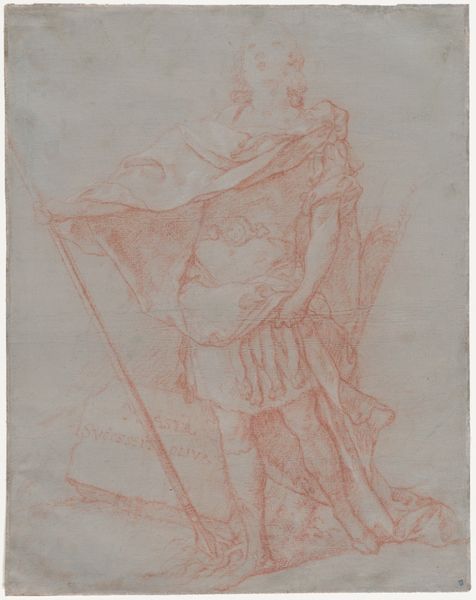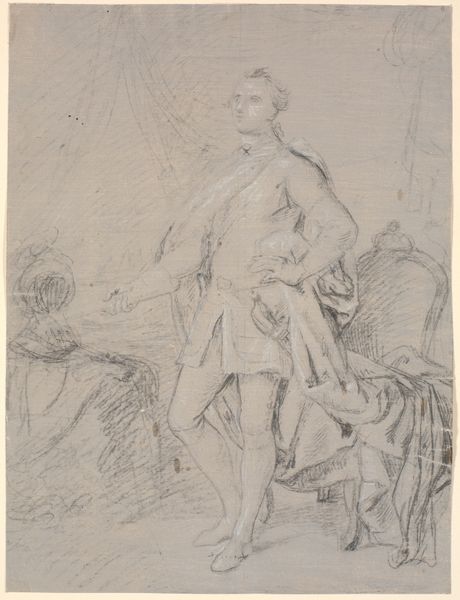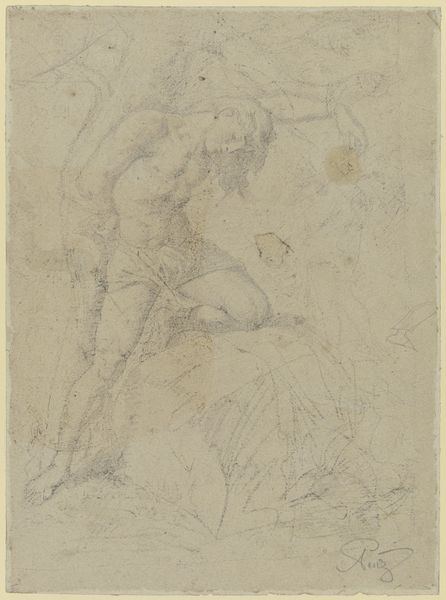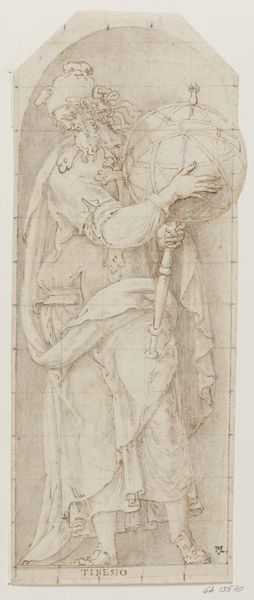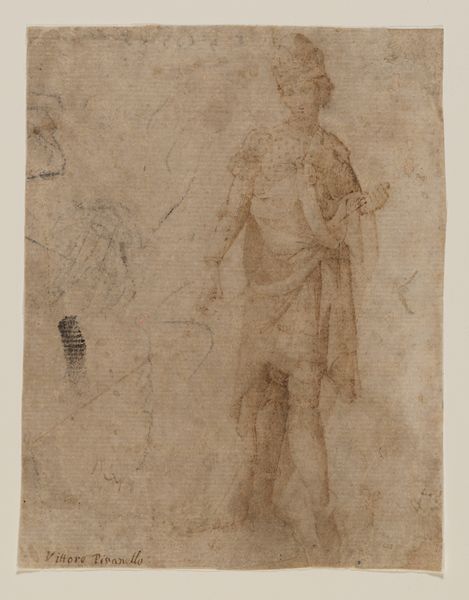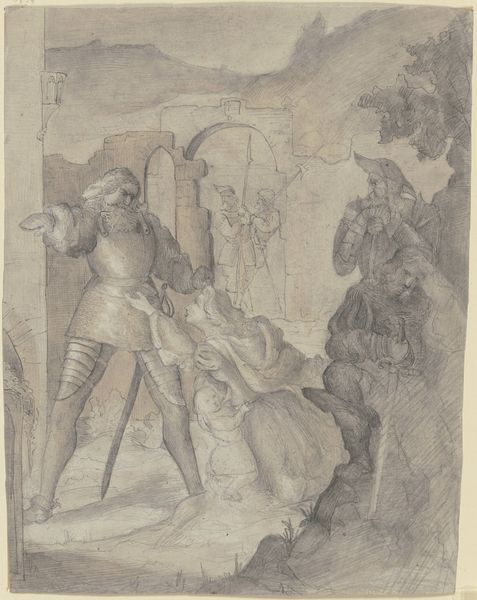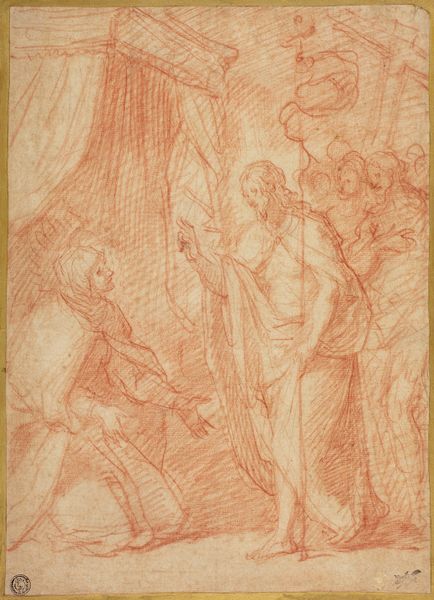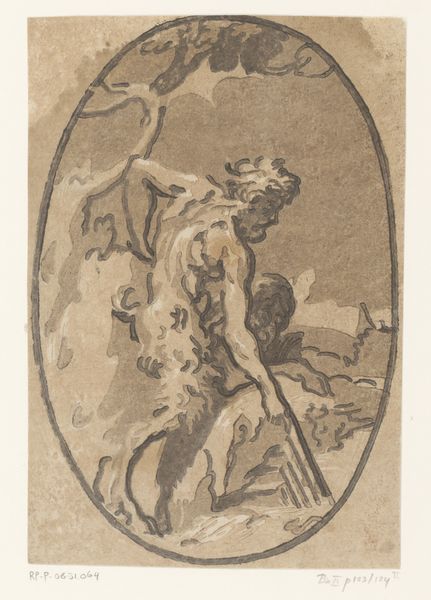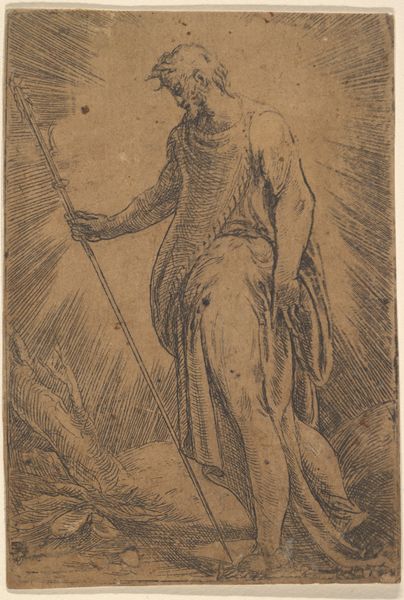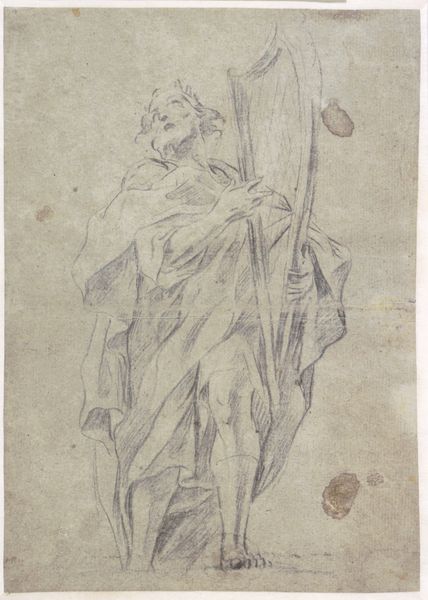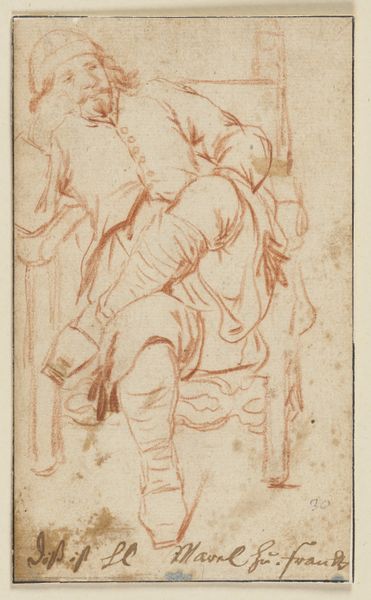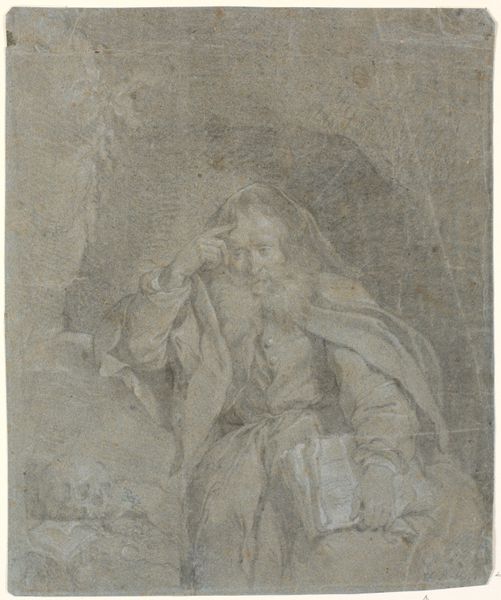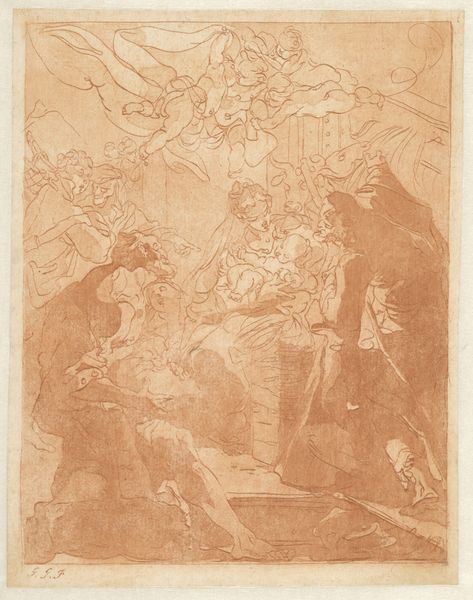
Udkast til portræt i helfigur. Forarbejde til Chr. VIs familiebillede (Rosenborg)? Frederik d. V. som kronprins 1742 - 1745
0:00
0:00
drawing, pencil
#
portrait
#
drawing
#
baroque
#
pencil sketch
#
figuration
#
pencil
#
sketchbook drawing
#
pencil work
#
history-painting
#
academic-art
Dimensions: 234 mm (height) x 172 mm (width) (bladmaal)
Curator: Let's consider this study, “Udkast til portræt i helfigur,” which roughly translates to "Draft for a full-length portrait." It's a pencil drawing from circa 1742-1745 by Marcus Tuscher. It resides here at the SMK, and scholars believe it may be a preparatory sketch for a larger family portrait of King Christian VI. Editor: My first impression is one of fragility. It feels like catching a fleeting thought. The delicate lines of the pencil against the pale blue paper—it suggests a momentary vision rather than a fixed representation of power. Curator: Precisely. The pencil itself would have been relatively new technology for large-scale artworks. Consider that earlier, artists often used metalpoint or charcoal for preliminary sketches. Editor: The tentative lines also serve a symbolic purpose. Note the almost ghostlike figures behind the central figure, presumably the Crown Prince Frederik V. Their obscurity highlights the central figure’s presumed destiny and position. This artistic technique places importance on him and seems to remove those behind him from focus. Curator: Indeed. Tuscher employed classic baroque tropes— theatrical drapery, hierarchical composition—to visually reinforce the Prince’s status and project dynastic continuity. Look closely at how Tuscher sketches the princely garb; each small movement appears calculated. These costumes aren't simply about warmth or practicality; they are tools to construct visual power and social stratification. Editor: I’m fascinated by the choice of pencil as a medium, it’s so accessible, such a common tool today, yet here, centuries ago, we find it charting a course for royal propaganda. One begins to imagine the source of that pencil, its origins from materials carefully mined and transported. A vast operation in raw materials all going into that little pencil. Curator: That blend of accessibility and calculated symbolism is really quite characteristic of baroque portraiture at the time. The drawing seems simultaneously casual, yet conveys complex ideas about royal power. It captures a sense of expectation and the weight of dynastic responsibility. Editor: It really pushes you to consider the material circumstances that enable such portrayals of power. So much begins here at the source, doesn't it? Thanks for shedding light on this evocative sketch.
Comments
No comments
Be the first to comment and join the conversation on the ultimate creative platform.
